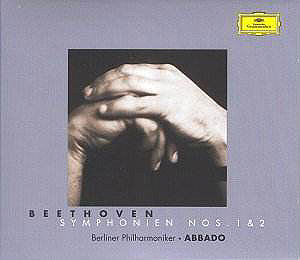 Composer: Richard Strauss
Composer: Richard Strauss
Works: Ariadne auf Naxos
Performers: Deborah Voigt (soprano, Ariadne/Primadonna), Anne Sofie von Otter (mezzo, Composer), Natalie Dessay (soprano, Zerbinetta), Ben Heppner (tenor, Bacchus), Albert Dohmen (bass-baritone, Music Master), Romauld Pekny (bass, Major-domo), Stephan Genz (baritone, Harlekin), Christiane Hossfeld (soprano, Naiad), Angela Liebold (mezzo, Dryad), Eva Kirchner (soprano, Echo), Michael Howard (tenor, Dancing Master), Sami Luttinen (bass, Truffaldino), Christoph Genz (tenor, Brighella), Ian Thompson (tenor, Scaramuccio), Romuald Pekny (narrator, Major-Domo), Jürgen Commichau (bass, Footman), Matthias Henneberg (tenor, Wig-Maker), Klaus Florian Vogt (tenor, Officer)
Recording: Recorded in the Lukaskirche, Dresden in September and December 2000
Label: DG
Richard Strauss’s “Ariadne auf Naxos” stands as a complex yet brilliant synthesis of operatic forms, deftly blending the frivolity of commedia dell’arte with the mythic gravitas of operatic tradition. First premiered in 1916, this work reflects Strauss’s innovative spirit at a time when he was pushing the boundaries of operatic narrative and structure. The duality of the Prologue and the opera proper presents unique challenges, both musically and dramatically. Giuseppe Sinopoli’s recording, which marked his final venture into the operatic realm, showcases a profound understanding of Strauss’s intricate textures and emotional breadth, making it a significant addition to the discography of this masterwork.
Sinopoli’s interpretation is characterized by a meticulous attention to detail and a deep respect for the score. The Staatskapelle Dresden, known as Strauss’s “beloved orchestra,” provides a lush and nuanced backdrop that enhances the vocal performances. This recording captures the chamber-like textures of the orchestration, allowing for a vivid interplay between the singers and the orchestra. The Overture, in particular, is rendered with an ethereal beauty, exhibiting Sinopoli’s ability to evoke a mythological atmosphere while remaining rooted in the distinctly Straussian sound architecture. The conductor’s choices of tempo are consistently engaging, allowing for a dynamic ebb and flow that reflects Strauss’s emotional landscape, particularly in the poignant moments leading to Ariadne’s final resolution.
Deborah Voigt’s portrayal of Ariadne is nothing short of revelatory. Her interpretation of “Es gibt ein Reich” is imbued with a profound sense of sorrow and longing, effectively capturing the character’s inner turmoil. Voigt’s voice exhibits a rich, full-bodied tone, complemented by her ability to convey the depth of emotion inherent in Strauss’s writing. The climactic final scene with Bacchus reveals her vocal agility and dramatic prowess, culminating in a performance that is both heartfelt and technically accomplished. Ben Heppner’s Bacchus, while less expressive initially, gains gravitas as the opera progresses, his soaring lines becoming increasingly compelling, particularly during his interactions with Voigt.
Natalie Dessay’s appearance as Zerbinetta is a highlight of the recording, her “Grossmächtige Prinzessin” is delivered with scintillating precision and theatrical flair. Dessay’s ability to navigate the challenging coloratura passages while maintaining character is indicative of her artistry. The balance between her and Voigt is crucial to the success of the performance, and Sinopoli ensures that the orchestra does not overshadow the vocalists, allowing Dessay’s brilliance to shine. Anne Sofie von Otter as the Composer offers a thoughtful and engaging portrayal, her vocal clarity and interpretative insight adding another layer to the performance.
The sound quality of this recording is exemplary, capturing the warmth and clarity of the Dresden Lukaskirche. The engineering allows for a transparent blend of voices and orchestra, ensuring that each part is discernible yet cohesive. This transparency is particularly evident in the offstage trio of Naiad, Echo, and Dryad, whose ethereal harmonies beautifully complement Ariadne’s lament, showcasing both the technical prowess of the singers and the engineering team’s skill in capturing the spatial qualities of the performance.
In the context of the extensive recorded history of “Ariadne auf Naxos,” Sinopoli’s interpretation stands as a distinguished entry, though it may not eclipse the iconic performances by Karajan or Kempe. The unique combination of the conductor’s insight, the exceptional talent of the soloists, and the rich sound of the Staatskapelle make this recording a compelling testament to Sinopoli’s legacy. This performance captures the essence of Strauss’s opera, revealing its joys and sorrows with clarity and emotional depth, positioning it as a valuable companion to other celebrated interpretations.



